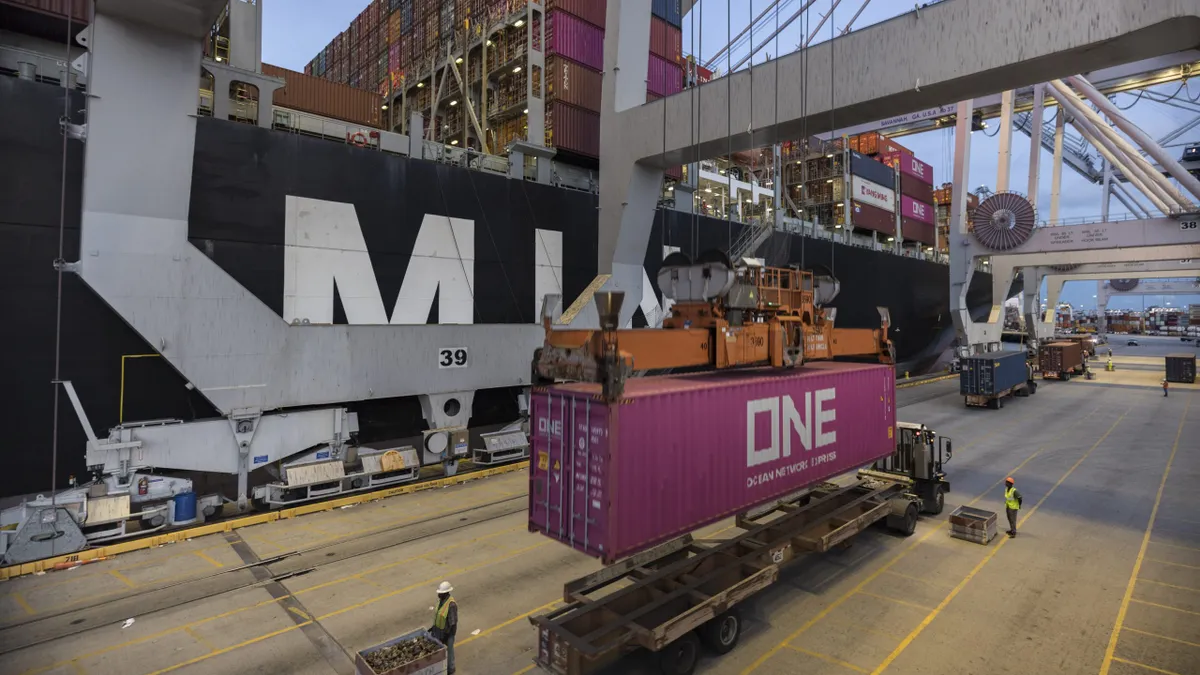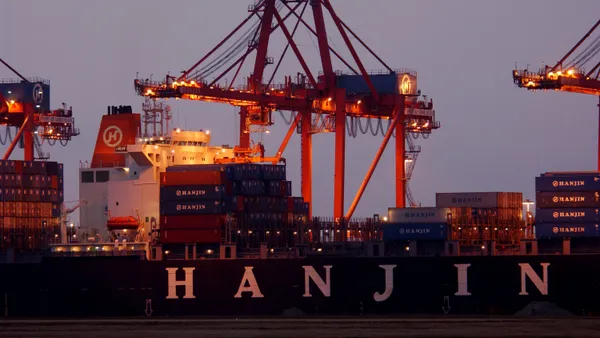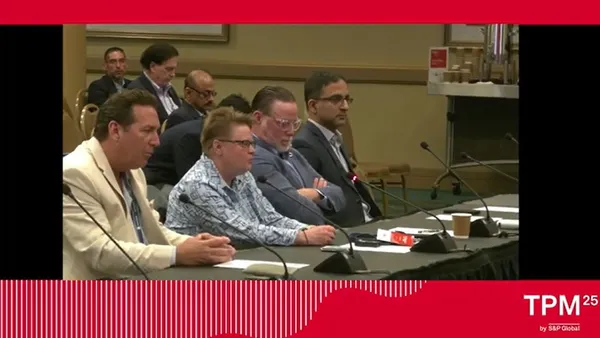Dive Brief:
- Spot rates for ocean shipments are on the decline from Asia to North America as cargo volumes ease, according to a Freightos weekly update from Oct. 22.
- Transpacific ocean rates per forty-foot equivalent unit to the U.S. West Coast fell 35% from a July peak, as of Oct. 22, while the rate to the East Coast declined 38% using the same comparison. Freightos noted that current rates are still above April’s Red Sea-crisis-impacted metrics.
- The need for carriers to recalibrate for slack season, diminished cargo demand and blunted impact from October’s East and Gulf Coast port strike have contributed to the ongoing decline in Transpacific eastbound rates, Hind Chitty, principal consultant with Drewry Supply Chain Advisors, told Supply Chain Dive in an email.
Dive Insight:
The downward trend in Transpacific ocean spot rates follow an early peak season surge, according to Chitty.
July and August’s rate jump resulted from shippers pulling forward peak season demand ahead of the Oct. 1 expiration date of the International Longshoremen’ Association’s master contract with the United States Maritime Alliance, Stephen Schwartz, managing director of supply chain, trade and channel solutions at Wells Fargo, told Supply Chain Dive.
Some retailers also opted for air freight instead of ocean freight, including Levi Strauss & Co., The fashion brand prioritized certain purchase orders and switched to air freight to ensure it had the products it needed for the holiday season, Chief Financial and Growth Officer Harmit Singh said on a Q3 earnings call.
Additionally, others locked in contract ocean rates, including Costco, whose CEO which said a “big chunk” of its freight comes in under contract, according to a Sept. 26 earnings call.
Costco President and CEO Ron Vachris said on the call that the spot market peaked in the last quarter and that the company is seeing rates decline. “Our team did a great job by insulating us with good solid contracts for this year,” he added.
Even with spot rates down, Freightos said shippers may need to watch out for a possible pre-Lunar New Year demand increase beginning in November. In particular, an early start could come from European shippers factoring in longer transit times around the Cape of Good Hope as Red Sea risks persist.
Rates could also increase with surcharges coming from multiple ocean carriers on Nov. 1. MSC and Hapag-Lloyd announced additional surcharges from Asia to Europe, while Maersk also will levy surcharges to multiple destinations, including Europe, India and the Middle East.














